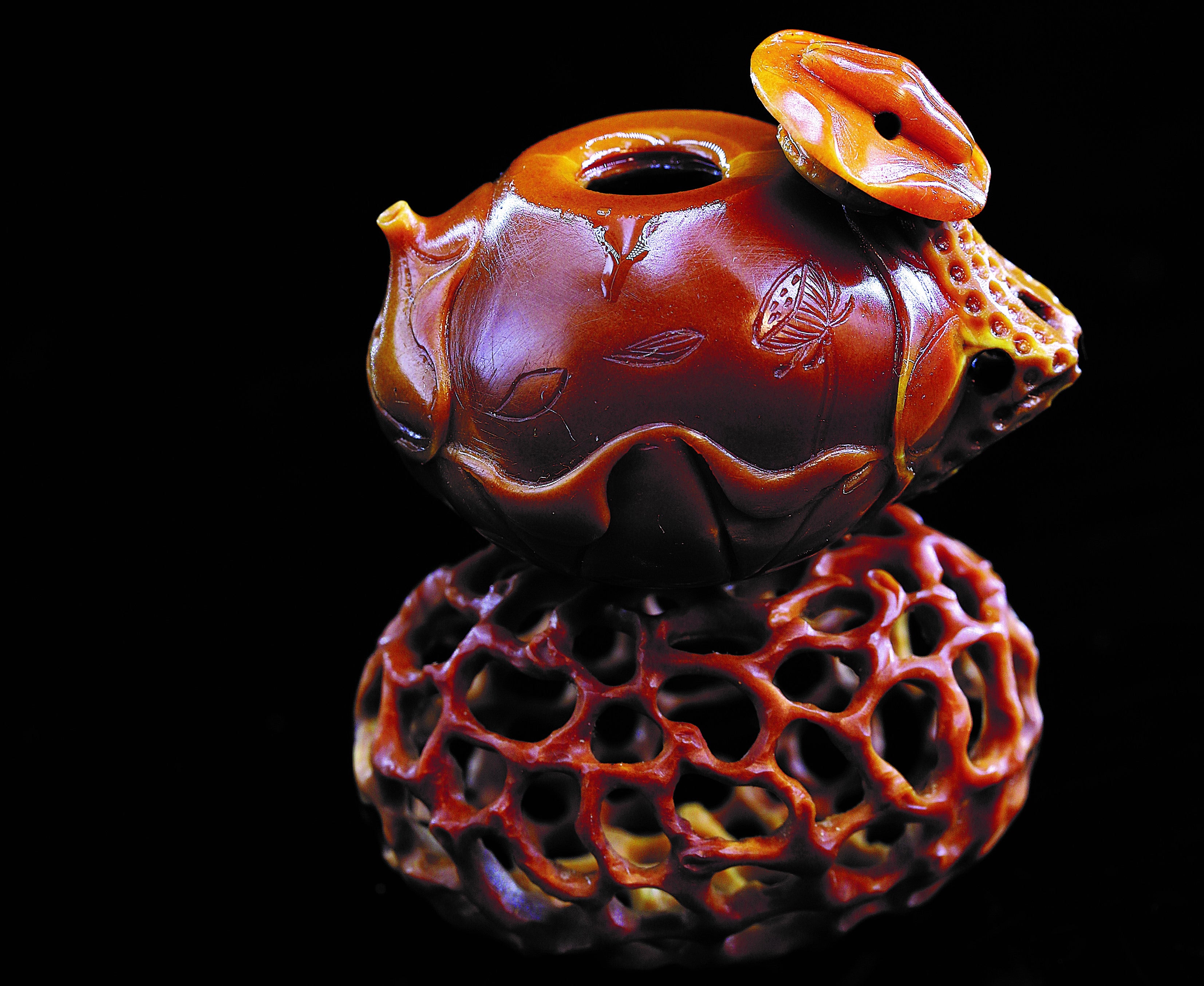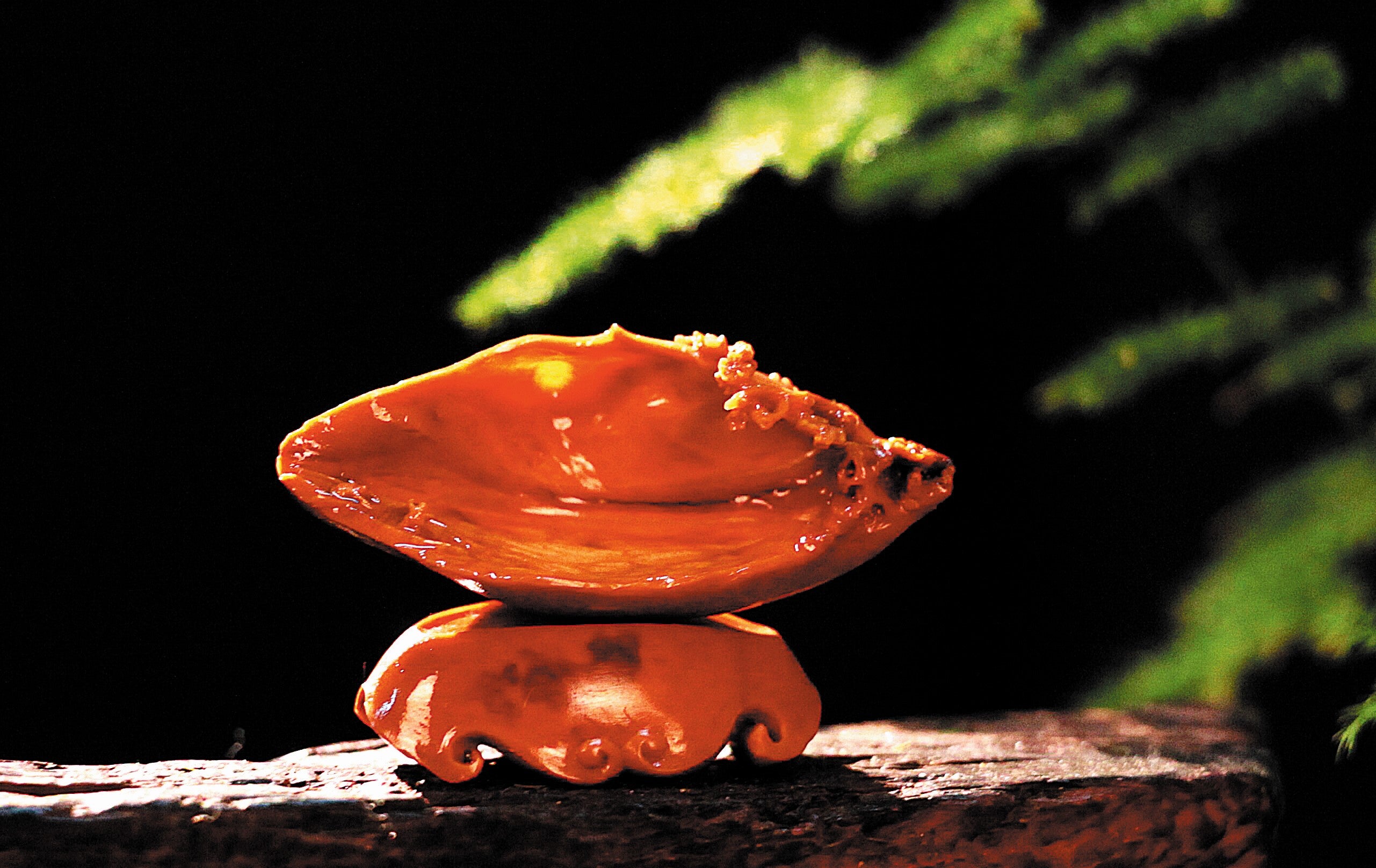An ancient craft makes a comeback
THE ARTICLES ON THESE PAGES ARE PRODUCED BY CHINA DAILY, WHICH TAKES SOLE RESPONSIBILITY FOR THE CONTENTS

The Story of the Kernel Carving Boat is an essay that many Chinese students would have come across in their textbooks. Written by a Ming Dynasty (1368-1644) scholar, the essay vividly describes the skill required to create a sculpture on a tiny kernel that depicts a boat with passengers, boatmen, a teapot and an oven.
While the original carving is nowhere to be found today, some artisans in Zhoushan village in Suzhou, Jiangsu province, have again brought this image of the carving to life with their rendition that was created from an olive kernel.
Xu Jingjian, 36, is one of them. The intricate sculpture, which measures just 1.8 inches in length, took Xu half a year of research and practice, and an entire month to complete.
Boat-themed carvings are considered the epitome of kernel carving in China because of the level of skills needed to execute such an intricate design.
The prices of such artworks start at about 20,000 yuan (£2,366), and those made by master artists such as Xu’s teacher Xu Zhongying, could be sold for as high as 300,000 yuan (£35,850).
The art of kernel carving dates back to the Song Dynasty (960-1279) and was especially prevalent in the Ming (1368-1644) and Qing (1644-1911) dynasties. People usually hung these kernels on their fans or wore them as fashion accessories or used them to ward off evil spirits.
According to historical records, nearly every rich intellectual during those times owned a folding fan decorated with a kernel carving ornament.

Suzhou has since the Ming and Qing dynasties been revered for its sophisticated kernel carving works. This is still the case today. Professional artisans in Suzhou use only a special olive kernel that grows in Guangdong province because it has an even colour and is thick enough for complex works to be performed.
Only olive kernels with a shell thickness of more than 0.2 inches are selected. Raw kernels are left to dry for at least three years before they are used, or else artists run the risk of having cracks in the shell during sculpting.
Xu Jingjian said the craft of kernel carving received a much-needed boost in 2008 when it was listed as national intangible culture heritage. Before that, only elderly artisans could be found making such delicate sculptures.
The Suzhou government has invested about 130 million yuan (£15.5million) to upgrade Zhoushan village and build a kernel carving gallery, studios and workshops since 2012. Starting this year, the city will also invest 150 million yuan annually into the promotion of the cultural industries for three consecutive years, said Jin Jie, Suzhou’s publicity chief.
Because of the strong government support and the growing profile of the craft, more young people are flocking to Zhoushan to pick up the skill. Today there are more than 3,000 artisans in the village, many of them young people. The younger designers have brought fresh ideas to the craft, as opposed to merely replicating traditional designs.
Lu Xiaoqin, 45, an artist, has made a name for herself after coming up with a unique approach of introducing the element of light to her works. Her most awarded work is called Sunshine On Taihu Lake, and was created by crafting sculptures within the kernel instead of on it. A ray of light shines from the top.
“I have seen more young people become interested in the art form,” Lu said. “Their tastes are increasingly diversified and they want to see something different. This has encouraged me to do new things in my work.”
Previously published on Chinadaily.com.cn

Bookmark popover
Removed from bookmarks